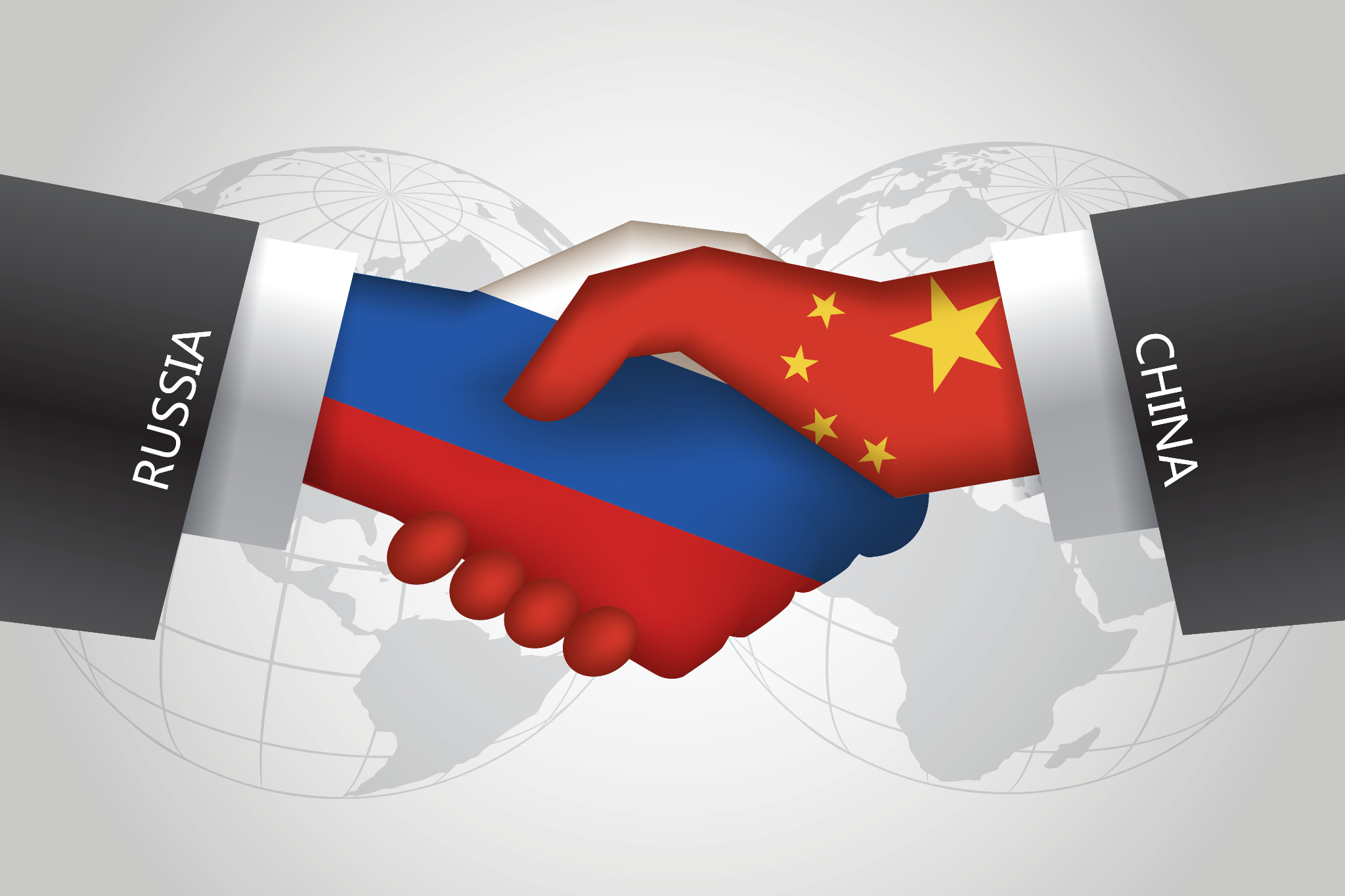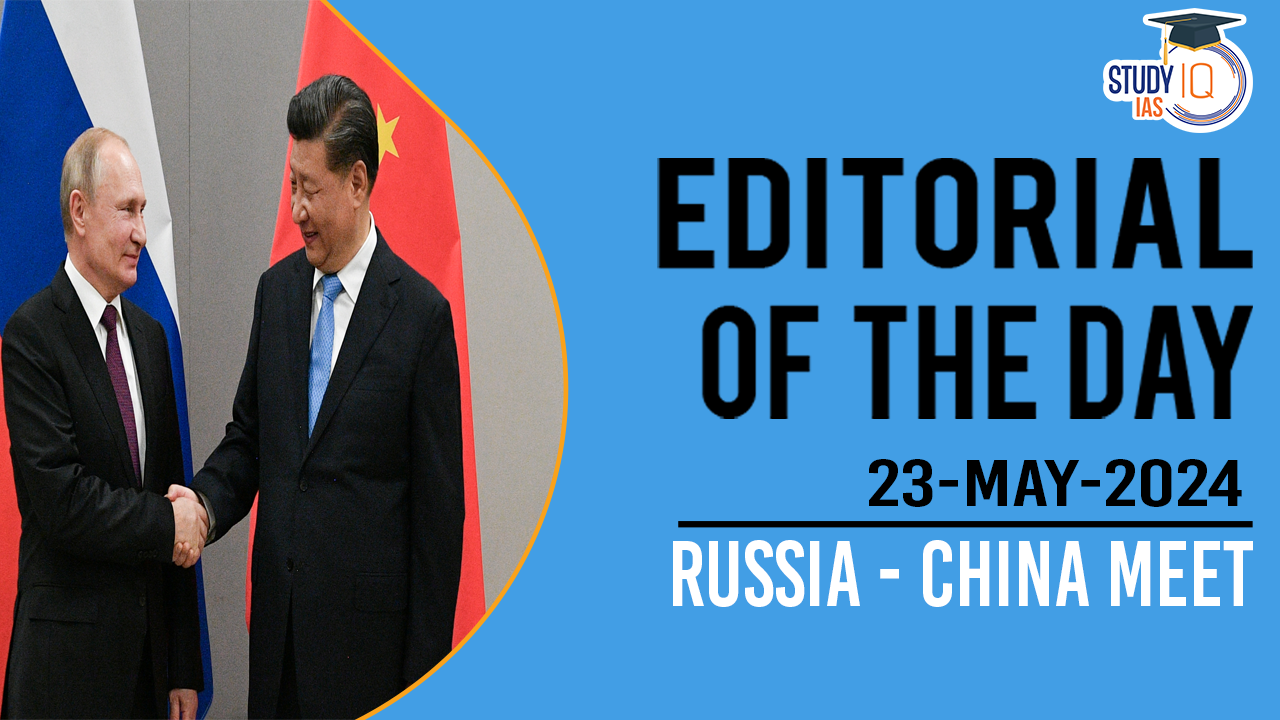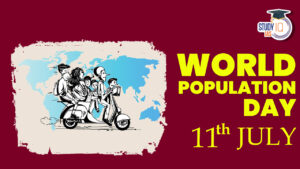Table of Contents
Context
- Recently a summit was held in Beijing between Russian President Vladimir Putin and Chinese President Xi Jinping marking the 75th anniversary of bilateral diplomatic relations.
- Their deepening alliance impacts global geopolitics and economies, including India’s complex relations with both nations.
Phases of Russia-China Ties
- 19th Century:
- Czarist Russia expanded to the Pacific, taking advantage of a weak China.
- The Soviet Union retained these territories.
- Post-1949:
- A decade of “Comintern brotherhood” followed the establishment of the People’s Republic of China (PRC).
- Relations soured due to ideological and geopolitical differences, including China’s attack on India in 1962 and armed clashes in 1969 over the Ussuri River border dispute.

- Post-1972:
- S. President Richard Nixon’s visit to Beijing aimed to wean China from the Russia-led Eastern Bloc.
- China tilted towards the West, receiving support for economic reforms and transforming into the “World’s Factory.”
- Moscow-Beijing ties weakened as the Soviet Union collapsed and the Russian Federation faced geopolitical competition with China in Central Asia.
- Post-2012:
- The U.S. launched a “pivot Asia” policy in response to China’s growing assertiveness.
- Russia and China declared “No Limits” to their ties at the Beijing Summit in February 2022.
- Following Russia’s invasion of Ukraine, Western sanctions pushed Russia closer to China.
- Trade between Russia and China reached $240 billion in 2023, with Russia heavily dependent on China for energy exports and critical inputs.
Joint Statement from the Summit
- The 7,000-word Joint Statement was notably silent on bilateral economic, financial, and military ties, possibly to avoid Western sanctions or to conceal disagreements.
- The joint statement does not address any issues specific to India, such as United Nations reforms, and only a sanitised version of the Ukraine conflict.
- The statement criticised the U.S. for pursuing “dual containment” and an “Indo-Pacific Strategy,” signalling an anti-U.S. stance.
Short and Long-Term Impacts
- Short-Term:
- Potential for intensified bilateral cooperation, especially in supplying dual-use materials for Russia’s Ukraine campaign.
- China may seek better terms for Russian raw materials, mining rights in Siberia, and access to Russian technologies.
- Long-Term:
- China’s profitable engagements with both Russia and the West may become untenable under continued Western pressure.
- This could lead to a new Cold War, with China pushing for a global order alternative to the U.S.-dominated post-World War II architecture.
- China’s initiatives like BRICS, the Shanghai Cooperation Organisation, and the Belt and Road Initiative could gain prominence.
Impact on India
- India faces challenges and opportunities from the deepening Russia-China ties.
- India needs to assess the depth and durability of their current phase, given their erratic past.
- Russia’s potential vulnerability to China’s hegemony could concern India, which relies heavily on Russia for defence supplies amid border tensions with China.
- India must carefully navigate its position, leveraging its strategic autonomy and pushing for a higher profile in the existing global order.
- Unlike during the first Cold War, India now has greater influence and should adopt a clear strategy to achieve its long-term national goals.


 World Population Day 2025, Themes, Histo...
World Population Day 2025, Themes, Histo...
 Special Intensive Revision (SIR) in Biha...
Special Intensive Revision (SIR) in Biha...
 List of Military Exercises of India 2024...
List of Military Exercises of India 2024...





















